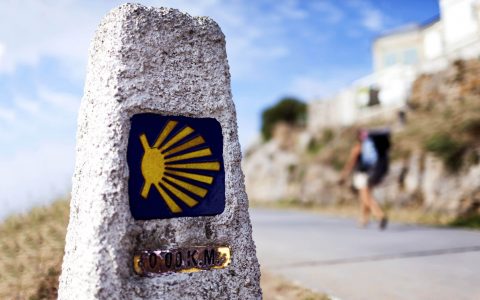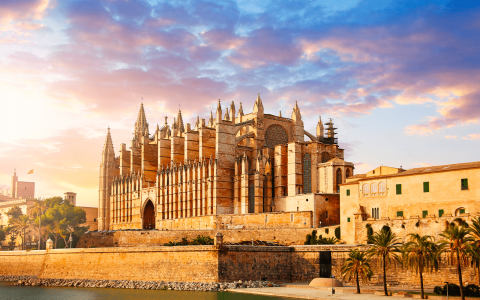In Deep:
La Rioja
 Famous for its wine, architecture, language and culture(s), La Rioja is easily one of Spain’s most fascinating – to say nothing of breathtaking – regions.
Famous for its wine, architecture, language and culture(s), La Rioja is easily one of Spain’s most fascinating – to say nothing of breathtaking – regions.
A hotbed for artistic creativity, where cutting-edge design is juxtaposed with old-world, rural living, in Rioja the wine tradition is rich and unfaltering, the cuisine and gastronomy delectable and the landscape ever-changing and impressive.
Rioja? La Rioja? Navarre? Navarra?
What’s in a name?
Rioja
 Rioja—or La Rioja—is both a province and an autonomous community on the Iberian Peninsula in north-central spain. The word “Rioja” is a combination of the words rio (“river”) and oja (one of the Ebro River’s tributaries).
Rioja—or La Rioja—is both a province and an autonomous community on the Iberian Peninsula in north-central spain. The word “Rioja” is a combination of the words rio (“river”) and oja (one of the Ebro River’s tributaries).
The name also describes the famous wine region of “Rioja,” which produces wines from grapes grown in La Rioja, but also in parts of neighbouring Navarra and the province of Álava (in Basque Country). The wine region is divided further into three sub zones on the Upper Ebro: Rioja Alta, Rioja Baja and Rioja Alavesa (more on that below).
The wine region differs from the political region. The latter lies mostly south of the Ebro River, and includes the mountainous region south of the valley, whereas the wine region is restricted to the valley itself, as well as the north bank of the river (part of the political region known as País Vasco).

Navarra
 To the northeast of La Rioja lies the autonomous community of Navarra (commonly spelled Navarre in English). Officially known as Comunidad Foral de Navarra (“Regional Community of Navarra”), the area is bordered by France to the north and Basque Country to the west.
To the northeast of La Rioja lies the autonomous community of Navarra (commonly spelled Navarre in English). Officially known as Comunidad Foral de Navarra (“Regional Community of Navarra”), the area is bordered by France to the north and Basque Country to the west.
The region’s capital is the city of Pamplona, on the western bank of the Arga River in the fertile region of La Cuenca.
Basque Country (Euskadi/País Vasco)
 Rounding out this part of Spain is yet another autonomous community. Basque Country (Euskadi in Basque and País Vasco in Spanish) is located southwest of the French border, on the coast of the Bay of Biscay (Golfo de Vizcaya). In 1978, the area was granted self-legislation in all matters concerning language and culture.
Rounding out this part of Spain is yet another autonomous community. Basque Country (Euskadi in Basque and País Vasco in Spanish) is located southwest of the French border, on the coast of the Bay of Biscay (Golfo de Vizcaya). In 1978, the area was granted self-legislation in all matters concerning language and culture.
Basque Country is made up of three provinces: Biscay (or Vizcaya), which includes Bilbao, Guipúzcoa, which includes San Sebastián, and Álava, which includes Vitoria-Gasteiz (or Vitoria), the Basque capital.
Navarra lies to the east of Basque Country and is partially populated by Basque people. La Rioja, by contrast, lies to the south of the region.
The Basque language, Euskera, is a non-Indo-European language; its origins baffle linguists even today!

See (and Sip) For Yourself
A contrast between ancient vines and avant-garde architecture, roll through Rioja and the Ribeira del Duero on our Spanish Wine Country Biking trip. With sweeping vistas and rolling hills along the way, pedal to secluded monasteries and castles, sip vintages in the very fields where they grow.
DETAILED ITINERARYRioja and Navarra:
A (Brief!) Early History
La Rioja and Navarra lie at the crossroads of two important pilgrimage routes: the Route of St. James (or the Camino de Santiago), which brought Celts, Goths, Franks, Saxons and Jews to Spain—and the river Ebro, which brought Iberians, Romans and Arabs from the Mediterranean.
When the Romans arrived in 200 BC, La Rioja and Navarra were occupied by Celtic tribes. In the 8th century the region was invaded by the Arabs, precipitating centuries of warfare between Arabs and Christians on the Iberian Peninsula.

Throughout the 12th century, Castile and Navarra warred over the area that is now La Rioja, until Henry I of England arbitrated in the favour of Castile in 1177. The name “La Rioja” appeared in a document for the first time in the Charter of 1099.
In 1369, Aragon and Navarra signed a treaty whereby La Rioja became the property of Aragon. It flip-flopped between Aragon and Navarra several times before Henry IV recovered the region for Castile. During the War of Independence (the Peninsular War), La Rioja and Navarra (as well as the Pais Vasco) were taken by the French, and not recovered until 1813.
In 1812, the Constitutional Cortes declared La Rioja an independent province. In 1822, the province of Logroño was created, which encompassed historical La Rioja. Finally, in 1833, a royal decree outlined a smaller version of La Rioja, which has remained unchanged until modern times.

Camino de Santiago

The ancient Romans considered the pilgrimage route of Camino de Santiago to a be a journey, literally, to the “end of the Earth.” Thus, the end of the pilgrimage, in Galicia, was named Cape Finisterre, the westernmost point in Europe, and at that time, the westernmost point of the world.
The Camino de Santiago gained prominence and popularity during the Crusades, after the corpse of Apostle Saint James was said to have miraculously appeared in the Galician settlement of Santiago de Compostela. Originally, the pilgrimage was considered to be a spiritual search for this saint.
Today, many hikers walk the route simply for pleasure, although some religious pilgrims still make the trek. There are in fact a variety of routes, beginning everywhere from Brussels to Geneva, Arles to Tours and Vézelay. Many pass over the Pyrenees before reaching Santiago de Compostela and Finisterre.

Santo Domingo de la Calzada
A stop along the hallowed pilgrimage of the Camino de Santiago, this wonderful small town, complete with a maze of medieval streets, is part of the Camino Francés , the most popular route, also known as the ‘French Way’. Named after its founder, Dominic de la Calzada, the town’s bridge, hospital, and cathedral were built to look after the many pilgrims traversing this stretch of the Camino de Santiago.

The Ebro River
Spanning a length of 910 kilometres (565 miles), The Ebro is one of Spain’s longest rivers and one of the most important rivers on the Iberian Peninsula. The river is also the biggest river by discharge volume in the country.

The Ebro’s headwaters are at Fontibre in the province of Cantabria. It passes through Miranda de Ebro, Logroño, Zaragoza, Flix, Torosa and Amposta before spilling into the Mediterranean in the province of Tarragona.
San Vicente de la Sonsierra
 Located on the left bank of the Ebro River, the city was established in the 10thC as a fortress to protect the people of the Kingdom of Navarre. An important site is its 11thC Romanesque church, the Basilica of Santa Maria de la Piscina, containing an icon of the Virgin Mary. One of the most fascinating cultural rituals still observed here is the medieval tradition of picaos—that of traditional penitence and ritual flagellations on Easter—usually observed only by men. The penitents (who are all hooded to preserve anonymity) will begin by removing their grey capes, and begin to flog their own bare backs using a cotton whip. First observed in the late 15thC or early 16thC, this is the last and only example of this type of religious behaviour in all of Europe.
Located on the left bank of the Ebro River, the city was established in the 10thC as a fortress to protect the people of the Kingdom of Navarre. An important site is its 11thC Romanesque church, the Basilica of Santa Maria de la Piscina, containing an icon of the Virgin Mary. One of the most fascinating cultural rituals still observed here is the medieval tradition of picaos—that of traditional penitence and ritual flagellations on Easter—usually observed only by men. The penitents (who are all hooded to preserve anonymity) will begin by removing their grey capes, and begin to flog their own bare backs using a cotton whip. First observed in the late 15thC or early 16thC, this is the last and only example of this type of religious behaviour in all of Europe.
Ribera del Duero
You can’t go wrong with thousands of years of winemaking expertise, and the Ribera del Duero is one of those legendary denominations that oenophiles flock to. Based on flat and rocky terrain, the most famous vineyards are around Peñafiel, named from the Latin term pinna fidelis, ‘loyal rock/mountain’, referring to the fortified castle set atop its hill. Another notable town here is Ezcaray, of Basque origin, a small town known for its woodworking craft (furniture, chairs, and more), as well as its handcrafted textiles, particularly blankets of mohair, merino and cashmere at a fraction of the price you’d pay elsewhere—a fantastic souvenir.

La Guardia
The capital of Rioja, this ancient town is all about the ancient craft of winemaking. First founded in 1164, there is a settlement that predates even the Romans. Surrounded on all sides by vineyards, this fortified town is dramatically set atop a hill in the middle of a valley, with the Cantabrian Mountains looming in the background. A series of tunnels underneath the city (with exits at the bottom of the hill) was built so that townspeople could escape in case of invasion; as it so happens, the locals found them perfect to store wine during peacetime—to this day, they serve as private cellars! You’ll also find a rich musical heritage in Laguardia, known for its talented musicians (particularly on the bagpipe), a town band that has been active for over 130 years, and a festival highlighting “the Day of the Piper”.

The Wine
 No discussion of La Rioja could be complete without mention of the region’s famous wine. La Rioja is divided into three sub-regions: Rioja Alta, Rioja Alavesa, and Rioja Baja. The soil of Rioja Alta comprises alluvial soil, calcareous clay and ferruginous clay. (Take a look at some of our favourite Rioja and Ribera del Duero wines to try).
No discussion of La Rioja could be complete without mention of the region’s famous wine. La Rioja is divided into three sub-regions: Rioja Alta, Rioja Alavesa, and Rioja Baja. The soil of Rioja Alta comprises alluvial soil, calcareous clay and ferruginous clay. (Take a look at some of our favourite Rioja and Ribera del Duero wines to try).
As the name suggests, much of this area is at higher altitudes. The Rioja Alavesa is mainly “terraced,” with limestone and clay-rich soils. The Riojan Baja comprises alluvial clay with large areas of ferruginous and calcareous clay. Generally, wines from the Baja have a higher alcohol content.
For much more on the wines of Rioja, check out the post in our Vines 101 series.
MORE FROM Spain + Rioja
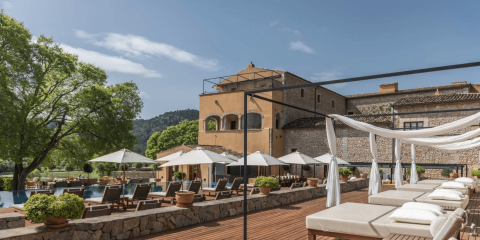
Son Brull Hotel & Spa Embraces Sustainability in Mallorca
Mallorca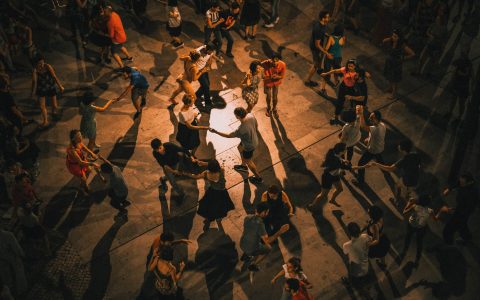
The Slow Fund: Commissioning New Instruments for Musika Etxea
Basque Country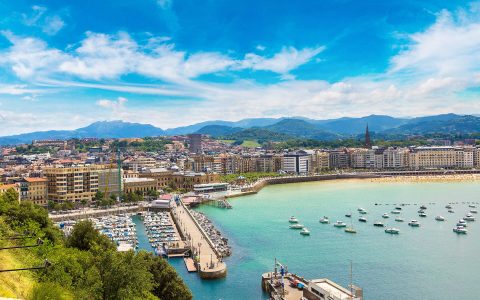
9 Things to Do that Will Submerse You in San Sebastian
Basque Country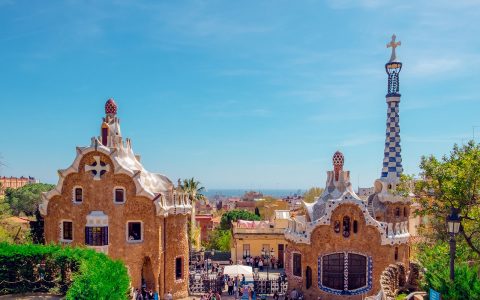
11 of Barcelona’s Most Spectacular Museums
Catalonia
What We’re Drinking:
Rioja’s Reds and Danish Akvavit
Denmark
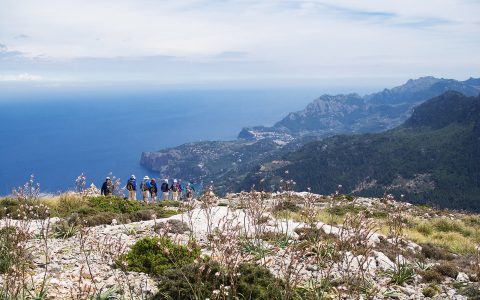
Our Favourite Coastal Walk Right Now: Mallorca
Mallorca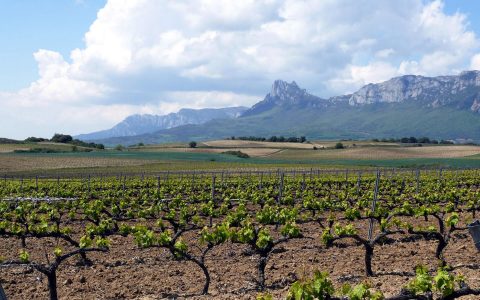
The 10 Best Rioja and Ribeira del Duero Wines
Rioja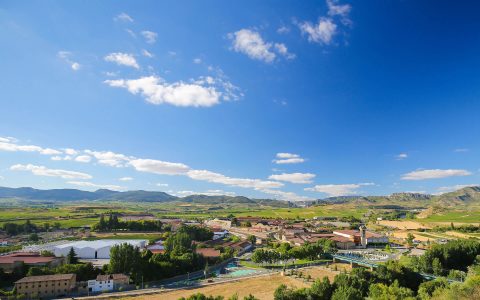
Reading for the Road: Our Favourite Books About Rioja
Rioja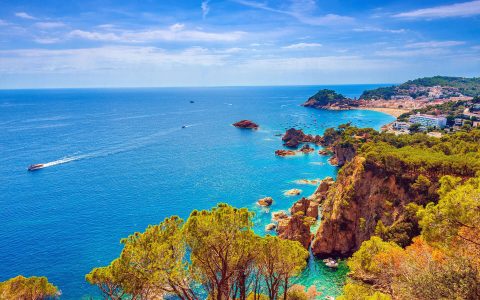
Reading for the Road: Our Favourite Books About Catalonia
Catalonia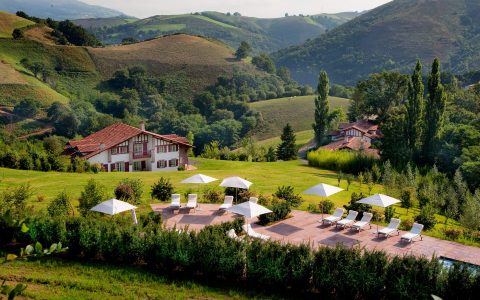
The 16 Best Luxury Hotels in Spain
Spain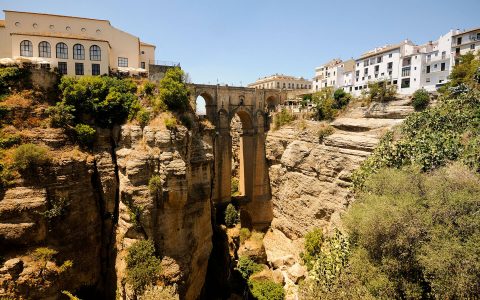
Reading for the Road: Our Favourite Books About Andalucia
Andalucia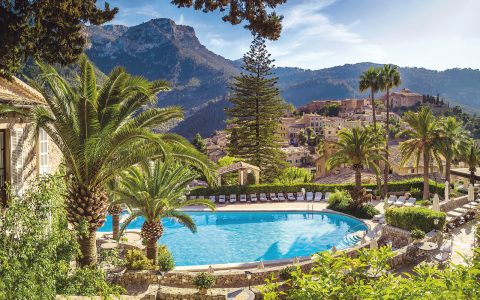
Mallorca’s Most Luxurious Hotels
Mallorca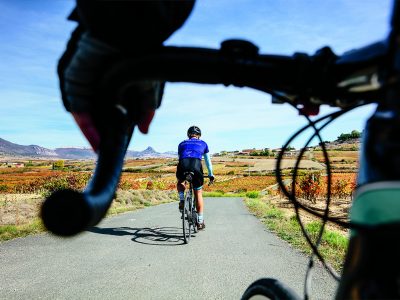
Here’s How to Take the Ultimate Biking Trip Through Rioja
Rioja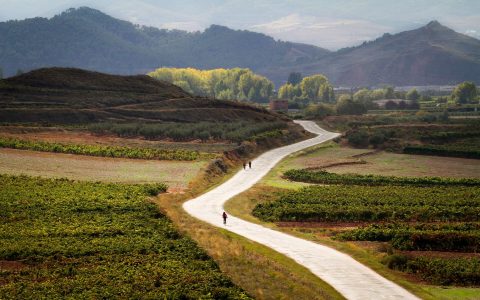
The 7 Best Cycling Routes in Spain
Spain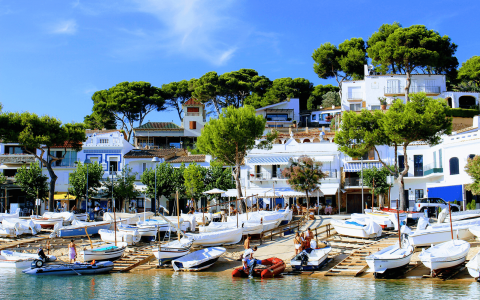
Where to Eat: Our Favourite Costa Brava Restaurants
Catalonia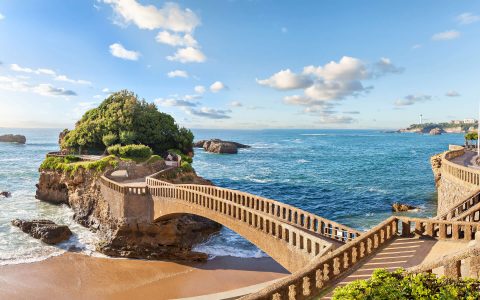
Basque Country’s 6 Best-Kept Secrets
Basque Country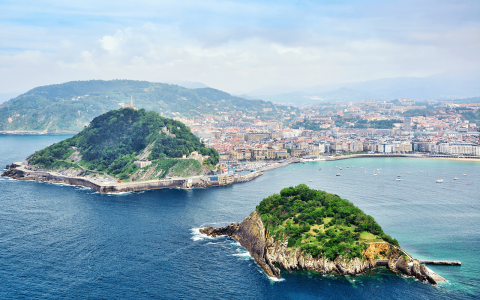
Basque Country: Exploring San Sebastián & Bilbao
Basque Country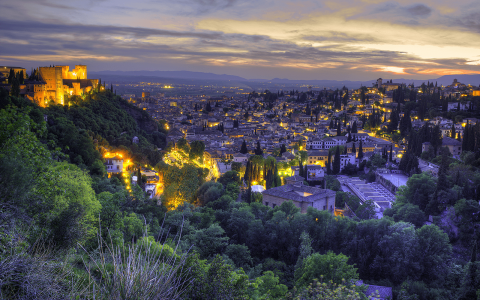
Granada: Last Stand of the Moors
Andalucia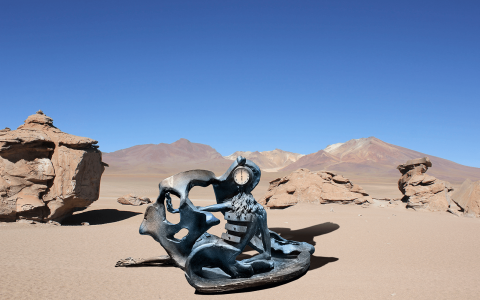
Surreal World: Salvador Dalí’s Costa Brava
Catalonia